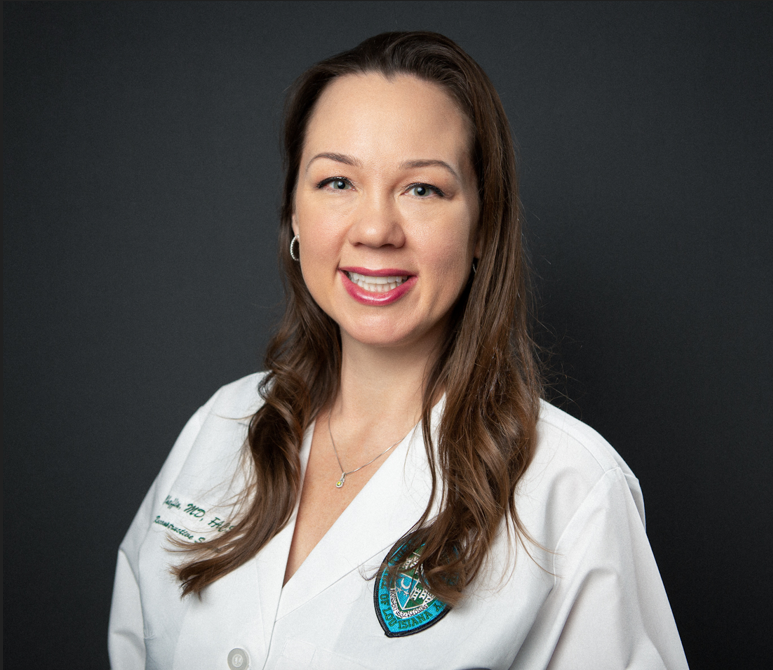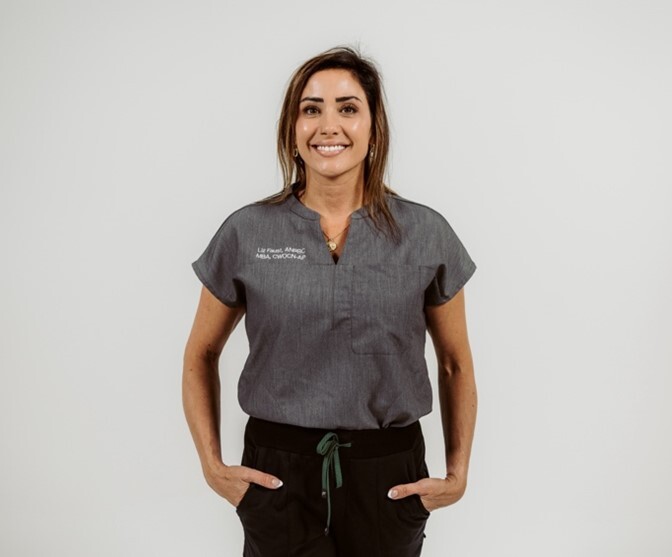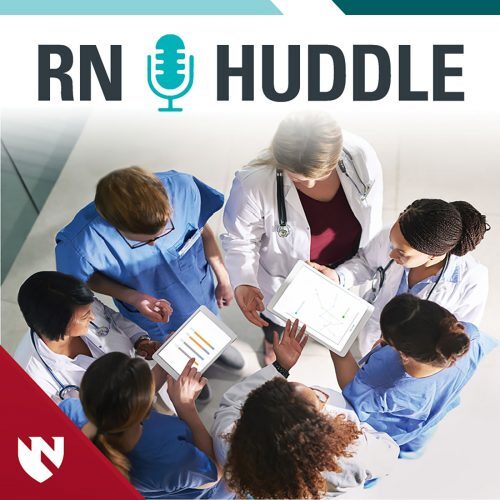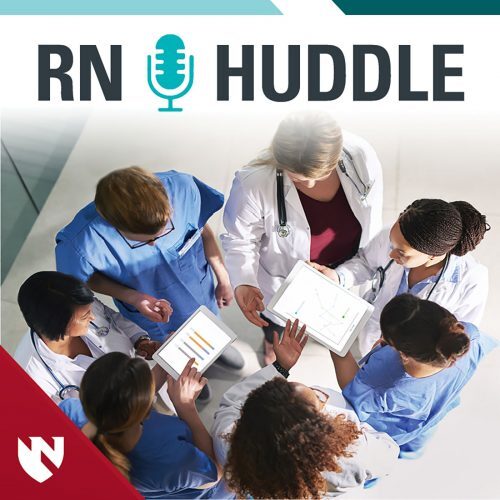
Catalog Advanced Search
-
Contains 4 Component(s)
Elizabeth Faust, MSN, CRNP, CSWS, CWOCN-AP, MAPWCA Abigail E. Chaffin, MD, FACS, CWSP, MAPWCA
This webinar will be recorded live on January 15th, 2024 at 12:00PM CT. A recording of the webinar will be available within 24 hours of the live event.
Dr. Abigail Chaffin, Elizabeth Faust offer the surgical and non-surgical perspectives of treating pressure injuries with Pure Hypochlorous Acid (pHA). They will review the three new publications on this topic in addition to current best practice guidelines. They will highlight case studies to show the effects of integrating this best practice into your practice. There will also be time for questions and answers.
• Discuss the current state of wound cleansing and review current practice guidelines.
• Highlight the therapeutic profile of pHA in the treatment of pressure injuries (PI)
• Discuss case-based presentation of pressure injury treatment highlighting both the non-surgical and surgical management.
Abigail E. Chaffin, MD, FACS, CWSP, MAPWCA
Professor and the Division Chief of Plastic Surgery
Tulane University
Dr. Abigail Chaffin is a Professor and the Division Chief of Plastic Surgery at Tulane University. She is board certified by the American Board of Plastic Surgery and the American Board of Surgery. She is the program director for the Tulane University/Ochsner Clinic Plastic Surgery Residency Program. She has practiced plastic surgery and wound medicine and wound reconstructive surgery for 17 years.
She is also the Medical Director of the MedCentris Wound Healing Institute at Metairie. She focuses her practice on wound medicine, complex surgical wound reconstructive surgery, and general plastic reconstructive surgery.
She has authored over 50 publications in plastic surgery and wound medicine, and she lectures nationally and internationally on these topics. She is a member of the Executive Board of the American Society of Plastic and Reconstructive Surgeons.

Elizabeth Faust, MSN, MBA, ANP-BC, CSWS, CWOCN-AP
Nurse Practitioner, Wound, Ostomy, and Continence specialist.
Owner of Lizzie Wounds, LLC
Elizabeth Faust, known as Liz or Lizzie, is a Nurse Practitioner, Wound, Ostomy, and Continence specialist. She graduated from Gwynedd Mercy University with her MSN in Adult Nurse Practitioner in 2009 and became a CWS, CWOCN, CWOCN-AP, and CSWS. She served for 13 years at Tower Health System in West Reading, PA, in a variety of roles, including inpatient CWOCN, system administrative lead for Wound Ostomy practices, and department head of inpatient wound care under plastic surgery at a 700+ Level 1 Trauma Center in Eastern Pennsylvania. She previously served as a nurse practitioner in an outpatient wound care center using a physical therapy model. She is passionate about education, particularly with NPWT and Pressure injury prevention and management. She has lectured internationally and facilitated Bioskills labs across the country. She runs a consulting business, Lizzie Wounds, LLC, focusing on education, marketing, product development, legal case reviews, and research. She also co-hosts an educational channel for wound care clinicians called The Frank & Lizzie Show.
-
Register
- Other - Free!
- Alumni - Free!
- Board of Directors - Free!
- CAC + POC - Free!
- Supporter - Free!
- More Information
-
Register
-
Contains 4 Component(s)
Charleen Singh PhD MBA MSN/ed FNP-BC CWOCN RN
This webinar will be recorded live on December 18th, 2024 at 12:00PM CT. A recording of the webinar will be available within 24 hours of the live event.
This webinar will cover the cost of pressure injury and why it is causing a practice shift towards prevention. The speaker will share her experience driving practice change towards prevention and the success they found. She will also share the real cost savings a facility can see if they make the investment into using quality prevention products that are evidence based. Lastly, she will help energize you to make a practice change to help solve the mystery of pressure injuries in your facility so you can help solve the case.
The learner will understand;
1. The cost of prevention
2. The return on investment
3. How to use evidence based practice for preventionCharleen Singh PhD MBA MSN/ed FNP-BC CWOCN RN
Surgical Nurse Practitioner and Educator
Dr. Singh has a 25 years plus career which started in the neonatal ICU at British Columbia Children’s hospital then off to Seattle Children’s Hospital. She has spent 14 years at Lucile Packard Stanford Children’s Hospital where she developed the role of the pediatric CWOC nurse. And now practice across the age spectrum and teach. For 5 years she was at San Jose Regional a HCA hospital transitioning the wound care service line to an inpatient-outpatient model while facilitating reduction in pressure injuries.
Dr. Singh enjoys evaluating secondary data and researching innovative approaches to wound, ostomy and continence care. Has published in several journal an a wide range of topics related to improving the outcomes for people.-
Register
- Other - Free!
- Alumni - Free!
- Board of Directors - Free!
- CAC + POC - Free!
- Supporter - Free!
- More Information
-
Register
-
Contains 1 Component(s)
Join Dr. Joyce Black and Ann Marie Nie to discuss treating pressure injuries in children. Visit Mölnlycke's website
In this episode of RN Huddle, Dr. Joyce Black sits down with Ann Marie Nie, PhDc, RN, MSN, FNP-BC, APRN, CWOCN, a pediatric wound care expert at Dayton Children's Hospital, about the unique challenges of preventing and treating pressure injuries in children. Ann Marie discusses her dissertation research, focusing on the role medical devices play in causing pediatric pressure injuries and how these injuries differ from those in adults. She also shares insights on working with parents to prepare for the care of their child and highlights the anatomical differences in children's skin that impact wound healing. Tune in for an insightful conversation on pediatric wound care and prevention!
Visit Mölnlycke's website here!
-
Register
- Other - Free!
- Alumni - Free!
- Board of Directors - Free!
- CAC + POC - Free!
- Supporter - Free!
- More Information
-
Register
-
Contains 4 Component(s)
Joyce Black, PhD, RN Kathleen Vollman, MSN, CN, CCNS, FCCM, FCNS, FAAN
This webinar will be recorded live on November 21st, 2024 at 11:00AM CT. A recording of the webinar will be available within 24 hours of the live event.
Immobility is an important factor associated with pressure injury (PI), and adequate and effective mobility strategies are necessary to reduce the risk to the patient and care giver. The session begins with an overview of the problem of pressure injuries in bed bound patients and a brief overview of a comprehensive pressure injury prevention plan. An in-depth examination of the evidence supporting various pressure redistribution strategies used in various clinical settings will be outlined. The critically ill population is especially at risk with one out of every 4-5 patients will develop pressure injuries. The majority are on the sacrum and heels, clearly demonstrating the negative impact of lack of in bed mobility. Innovative programs for early mobility in the ICU and overcoming the barrier of hemodynamic instability are critical to the success of any pressure redistribution plan. As nurses we know what needs to be done but often are unable to achieve the care because of competing priorities. When the patient moves from ICU to the other units including rehabilitation and long term care, the pressure injury risk does not always lessen. We will examine methods to continue to mobilize the patient in bed. And we will examine approaches to the nonadherent patient in all settings. Let’s work together and take ownership to make the right care happen at the right time for the right patient.
1. Identify the critical barriers preventing the nurse from effectively delivering evidence-based care around mobility and shear or barriers to in bed mobility across the continuum
2. Compare and contrast various evidence-based strategies to reduce pressure, shear, friction during in bed mobility
3. Outline innovative programs or strategies to help successfully achieve in-bed mobility
4. Address approaches for patients and residents who are nonadherent to turning and repositioning programs
Joyce Black, PhD, RN, FAAN
Joyce M. Black, PhD, RN is the Florence Neidfelt Professor in the College of Nursing at the University of Nebraska Medical Center in Omaha, Nebraska. She is the current President of the National Pressure Injury Advisory Panel, having previously served as President, Vice-President and Secretary. Dr Black served as the co-chair of the task force to update the definitions of the stages of pressure injury including medical device pressure injury. Dr. Black has received many awards for her work in pressure injury, most recently the Kosiak award from NPIAP for her work in rediscovering deep tissue pressure injury.

Kathleen Vollman, MSN, RN, CCNS, FCCM, FCNS, FAAN
Ms Vollman is a Critical Care Clinical Nurse Specialist and Consultant. She has published & lectured nationally and internationally on a variety critical care, prevention of health care acquired injuries including pressure injury and HAI’s and serves as a subject matter expert on these topics for the American Hospital Association. From 1989 to 2003 she function as a Clinical Nurse Specialists for the medical ICU’s at Henry Ford Hospital in Detroit Michigan.
-
Register
- Other - Free!
- Alumni - Free!
- Board of Directors - Free!
- CAC + POC - Free!
- Supporter - Free!
- More Information
-
Register
-
Contains 4 Component(s)
Join us on Wednesday, November 13th from 11:00AM-1:00PM CT for NPIAP's 2024 Virtual Fall Conference!
Pressure injury, skin failure and unavoidable pressure injury may co-exist at times and create a Bermuda triangle of confusion for the clinician. A recent think tank hosted by NPIAP furthered the discussion by examining a condition often called skin failure in the critically ill. Join us to hear the results of the think tank's discussion on skin failure and how these 3 concepts overlay each other leading to clinical questions of "Can I determine the cause by just looking at the wound?” Can I just tell by looking at the wound what the cause was ?" "Do we have to count it?' "Does skin failure only occur on the sacrum?" “Can skin failure go deeper than the skin?”" “What are reliable strategies for determining when a pressure injury is unavoidable?”
This live session of NPIAP's 2024 Virtual Fall Conference will take place on Wednesday, November 13th from 11:00AM-1:00PM CT. A recording of the session will be available within 24 hours after the session has ended.

Joyce Black, PhD, RN, FAAN
Joyce M. Black, PhD, RN is the Florence Neidfelt Professor in the College of Nursing at the University of Nebraska Medical Center in Omaha, Nebraska. She is the current President of the National Pressure Injury Advisory Panel, having previously served as President, Vice-President and Secretary. Dr Black served as the co-chair of the task force to update the definitions of the stages of pressure injury including medical device pressure injury. Dr. Black has received many awards for her work in pressure injury, most recently the Kosiak award from NPIAP for her work in rediscovering deep tissue pressure injury.

Janet Cuddigan, PhD, RN, FAAN
Dr. Cuddigan is Professor Emeritus at the University of Nebraska Medical Center in Omaha, Nebraska. She is a former president of the National Pressure Injury Advisory Panel (NPIAP). She currently serves as the Chair of the International Pressure Injury Guideline Governance Group.

Jill Cox, PhD, RN, APN-c, CWOCN, FAAN
Dr. Jill Cox is a clinical professor of nursing at Rutgers University and an advanced practice nurse, with a subspecialty in wound, ostomy, and continence nursing in the acute care setting. Dr. Cox currently serves as a U.S. member of the guideline governance group for the development of the 2025 International Pressure Injury Prevention and Treatment guideline. She is a former board of director for the NPIAP. Dr. Cox’s research interests include pressure injury risk detection and pressure injury prevention in the hospitalized patient population, with a specific focus on pressure injuries in critical care patients. She is also a member of the Center for Health Equity and Systems Research (CHESR) at Rutgers School of Nursing.”

Kathleen Vollman, MSN, RN, CCNS, FCCM, FCNS, FAAN
Ms Vollman is a Critical Care Clinical Nurse Specialist and Consultant. She has published & lectured nationally and internationally on a variety critical care, prevention of health care acquired injuries including pressure injury and HAI’s and serves as a subject matter expert on these topics for the American Hospital Association. From 1989 to 2003 she function as a Clinical Nurse Specialists for the medical ICU’s at Henry Ford Hospital in Detroit Michigan.
1. Identify one clinical dilemma surrounding high-risk patients when trying to prevent pressure injury.
2. List foundational concepts that recur in the evidence supporting the phenomenon of skin failure
3. Delineate the conclusions of the think tank on skin failure and pressure injuries in critically ill patients.
4. Define unavoidable pressure injury. Discuss current knowledge of unavoidable pressure injury.-
Register
- Other - $75
- Alumni - $75
- Board of Directors - Free!
- CAC + POC - Free!
- Supporter - $67.50
- More Information
-
Register
-
Contains 1 Component(s)
Join Dr. Joyce Black and Brigitte Vola to discuss the critical issue of ECMO-related pressure injuries.
In today’s episode of RN Huddle, our NPIAP co-host, Dr. Joyce Black, is joined by Brigitte Vola to discuss the critical issue of ECMO-related pressure injuries and the steps her team at the University of Alabama at Birmingham (UAB) has taken to combat them. Brigitte dives into what ECMO is, why these vulnerable patients are at risk, and how UAB expanded its healthcare team to tackle this challenge. Tune in to learn about the innovative approaches UAB has implemented to eliminate these complex pressure injuries, one step at a time.
-
Register
- Other - Free!
- Alumni - Free!
- Board of Directors - Free!
- CAC + POC - Free!
- Supporter - Free!
- More Information
-
Register
-
Contains 3 Component(s)
Lee C. Ruotsi, MD, CWS-P, ABWMS, UHM
This webinar will be recorded live on October 30th, 2024 at 12:00PM CT. A recording of the webinar will be available within 24 hours of the live event.
Mucosal membrane pressure injuries remain a diagnostic and treatment challenge in spite of advances in pressure injury prevention and treatment over recent years. The anatomic locations and varied histology of mucosal tissues adds to this challenge. In this webinar we will discuss the variations in mucosal tissue and the anatomic locations in which they occur, as well as common etiologies of pressure injuries in these locations and tissue types.
- Discuss mucosal tissue type based on anatomic location.
- Describe how the various tissue types are impacted by pressure
- Discuss the varied etiologies of mucosal membrane pressure injuries
-
Register
- Other - $45
- Alumni - $45
- Board of Directors - Free!
- CAC + POC - Free!
- Supporter - $40.50
- More Information
-
Contains 1 Component(s)
Join Dr. Joyce Black and Lisa Grubb, DNP, RN, WOCN, C/DONA, CPHQ to talk about implementing pressure injury prevention in the ER.
In today's episode, Dr. Joyce Black sits down with Lisa Grubb, an assistant professor at Johns Hopkins School of Nursing, who shares her journey demonstrating how to prevent pressure injuries starting in the ER. Instead of coming in as an outsider, Lisa immersed herself in the workflow, collaborating with nurses to implement practical solutions. She explains how using realistic images helped educate staff unfamiliar with pressure injuries and highlights the importance of simple interventions, like performing skin assessments on every admitted patient. Lisa also shares her approach to working with ER teams and offers advice on bringing back actionable ideas to improve patient care. We hope you enjoy!
-
Register
- Other - Free!
- Alumni - Free!
- Board of Directors - Free!
- CAC + POC - Free!
- Supporter - Free!
- More Information
-
Register
-
Contains 3 Component(s)
Elizabeth Faust, MSN, MBA, CRNP, CSWS, CWOCN-AP Carley Rusch, PhD, RN, LDN
This webinar will be recorded live on September 18th, 2024 at 12:00PM CT. A recording of the webinar will be available within 24 hours of the live event.
In this webinar, Liz Faust, MSN, MBA, CRNP, CSWS, CWOCN-AP, and Carley Rusch PhD, RN, LDN will discuss their collaborative approach to implementing nutritional interventions utilizing the Standardized Pressure Injury Prevention Protocol Checklist (SPIPP-Adult) 2.0 in clinical practice. They’ll explore the connection between malnutrition, wound development, and healing. The presentation sheds light on how effective and timely collaboration enhances patient care to improve outcomes.
• Identify key nutritional interventions from the Standardized Pressure Injury Prevention Protocol Checklist (SPIPP- Adult) 2.0
• Describe how to translate these interventions into timely application of pressure injury risk assessment and execution of nutritional interventions
• Demonstrate an understanding of the link between malnutrition, wound development, and wound healing
• Discuss the role of interdisciplinary collaboration in nutrition for patients at risk for pressure injuries-
Register
- Other - Free!
- Alumni - Free!
- Board of Directors - Free!
- CAC + POC - Free!
- Supporter - Free!
- More Information
-
Register
-
Contains 1 Component(s)
Join Dr. Joyce Black, Lexie Caraway and Denise Lauderbaugh to talk about medical device related pressure injuries.
NPIAP returns with an insightful episode on pressure injuries related to medical devices, focusing on oxygen delivery systems. Dr. Joyce Black is joined by respiratory therapists Lexie Caraway and Denise Lauderbaugh. Together, they delve into their experiences with these systems, discussing strategies for preventing and detecting pressure injuries. The conversation also highlights ways respiratory therapists and nurses can collaborate more effectively to minimize these risks. We hope you enjoy today’s episode!
-
Register
- Other - Free!
- Alumni - Free!
- Board of Directors - Free!
- CAC + POC - Free!
- Supporter - Free!
- More Information
-
Register



